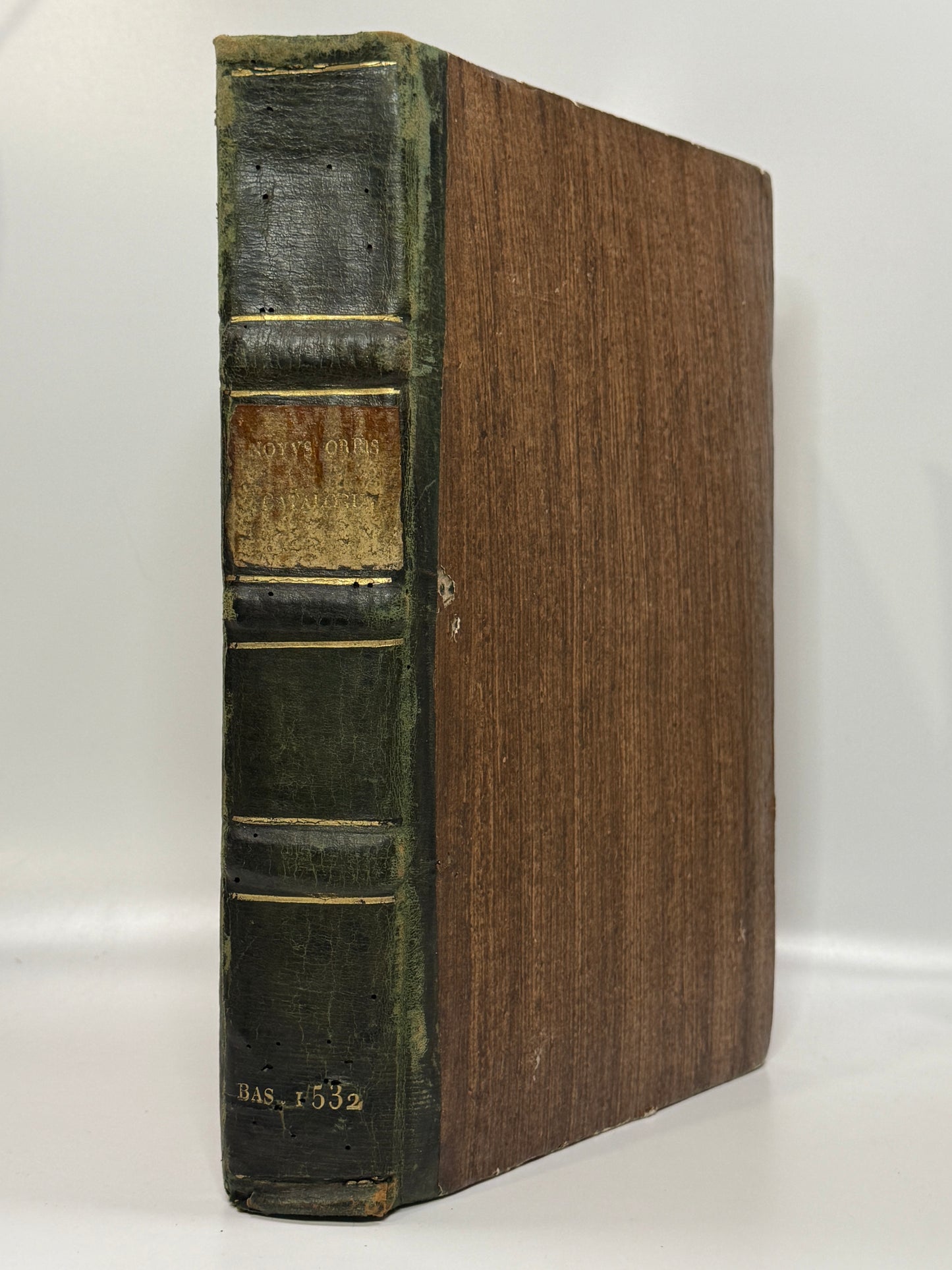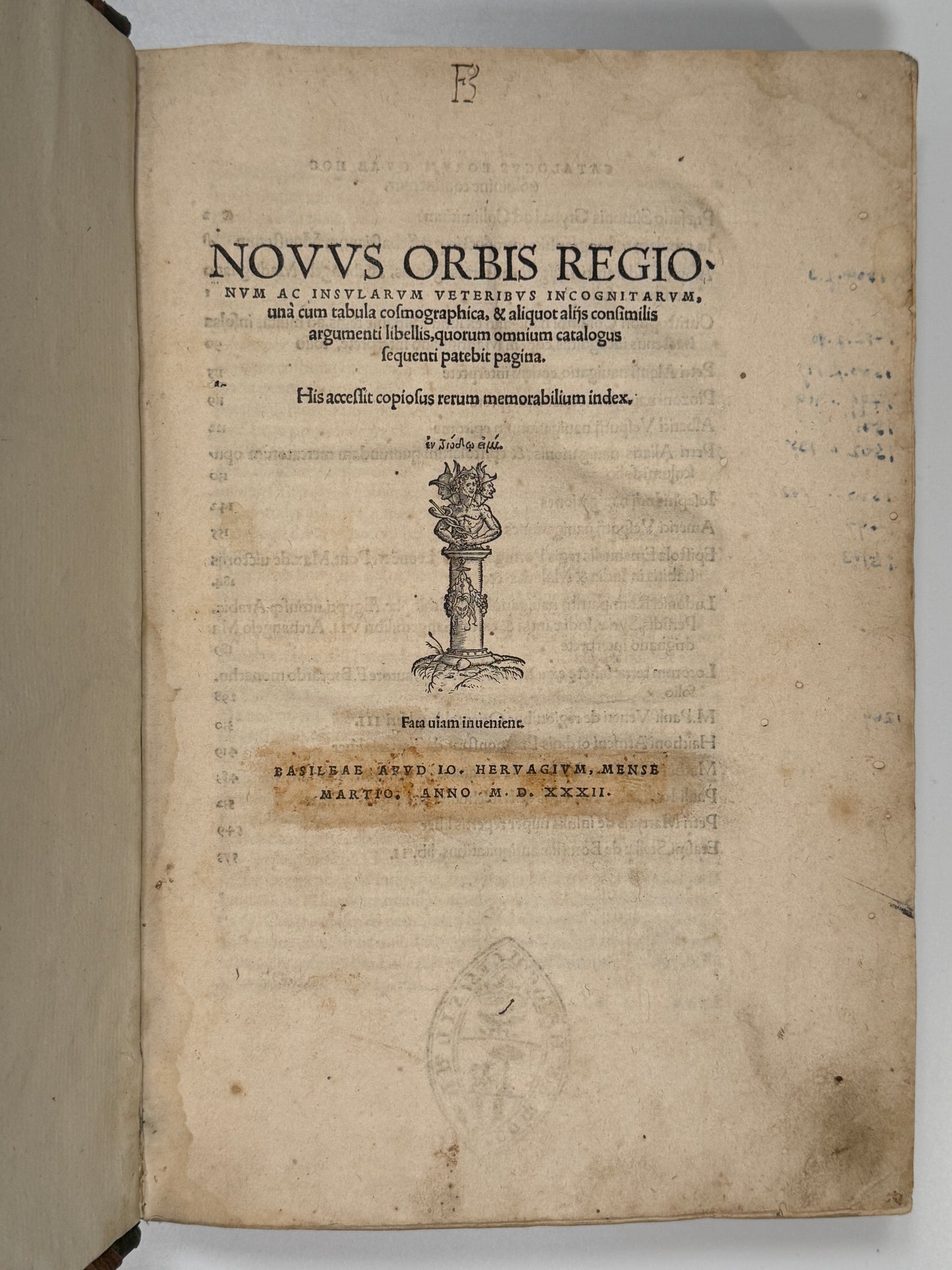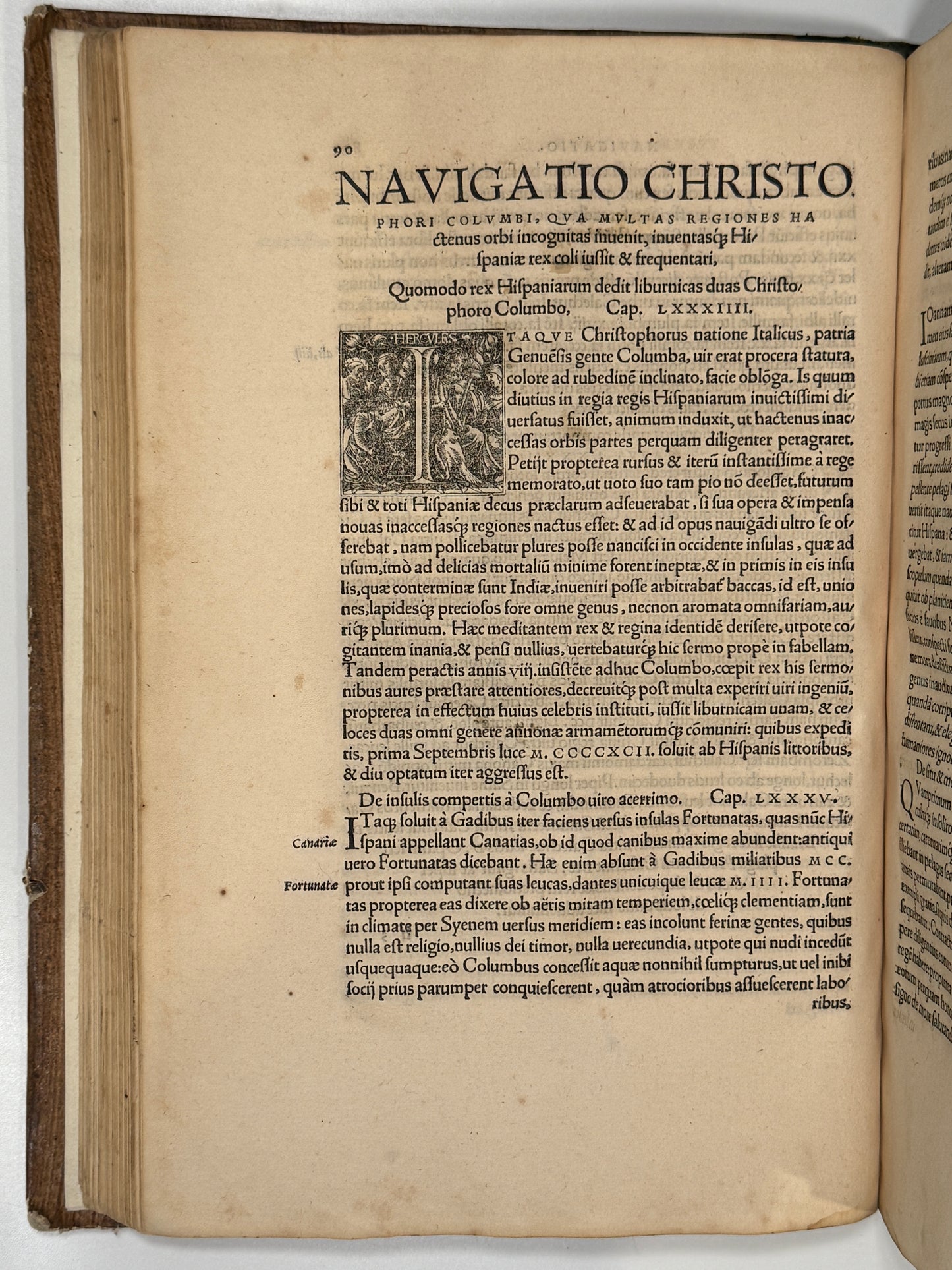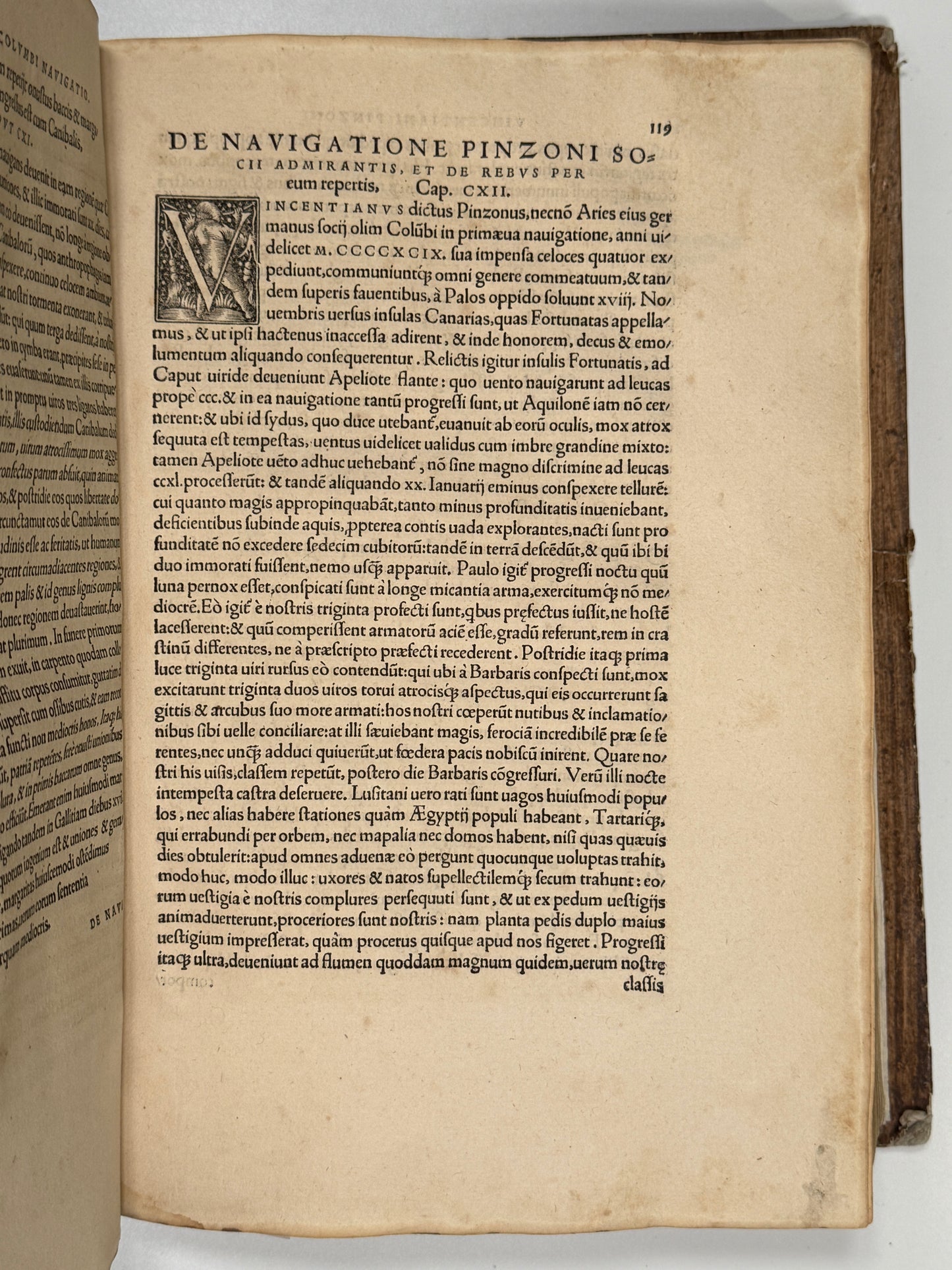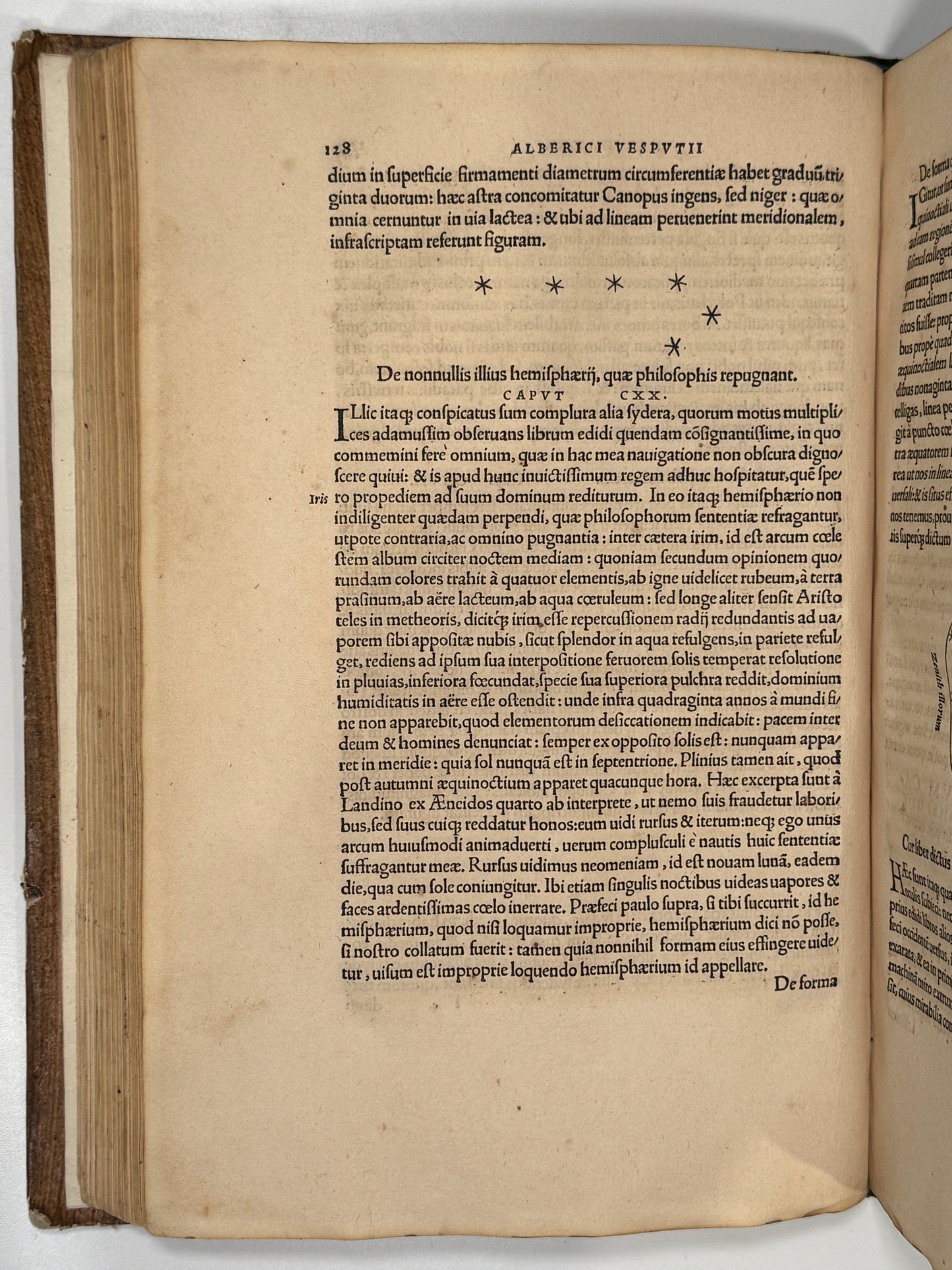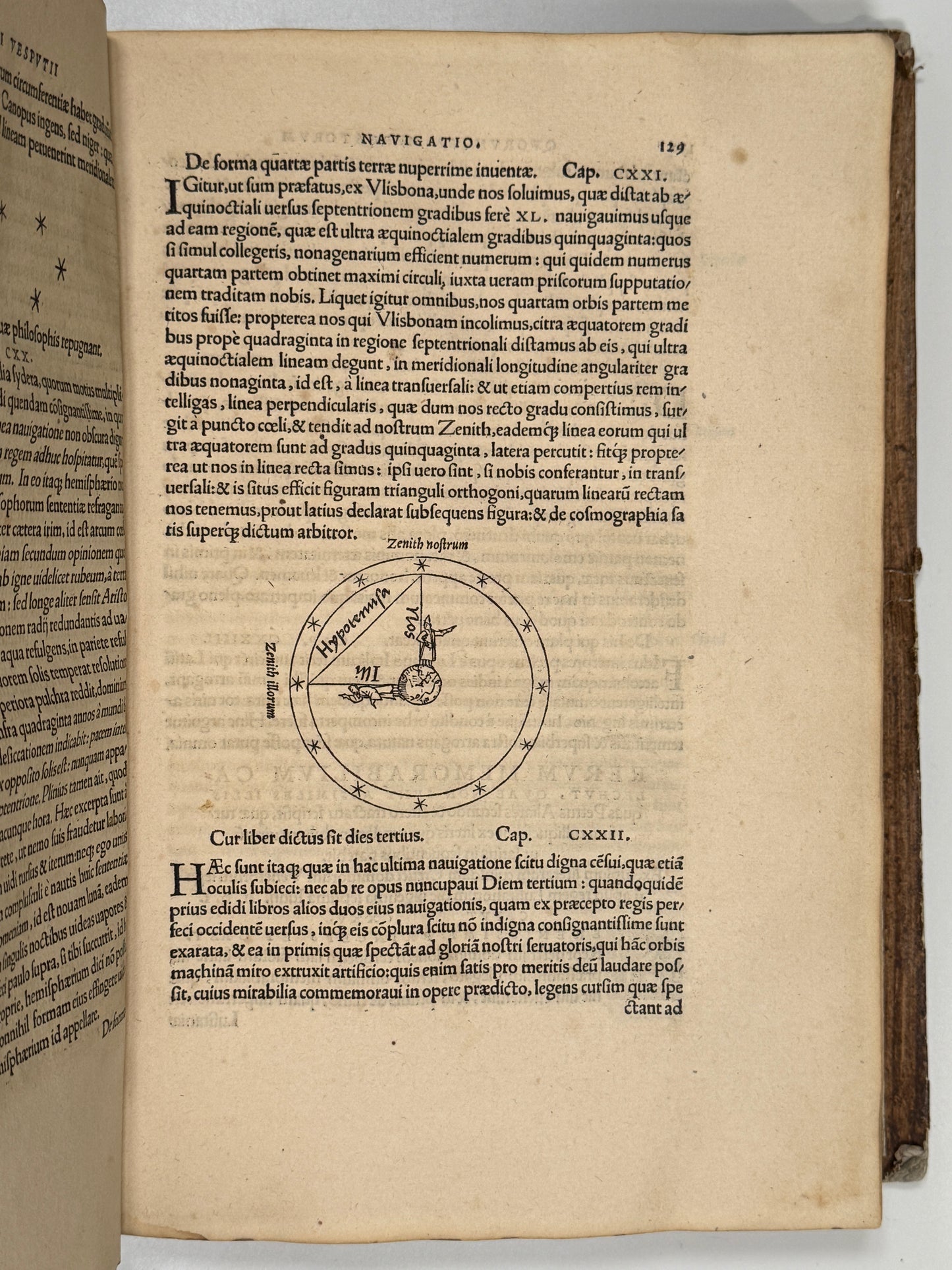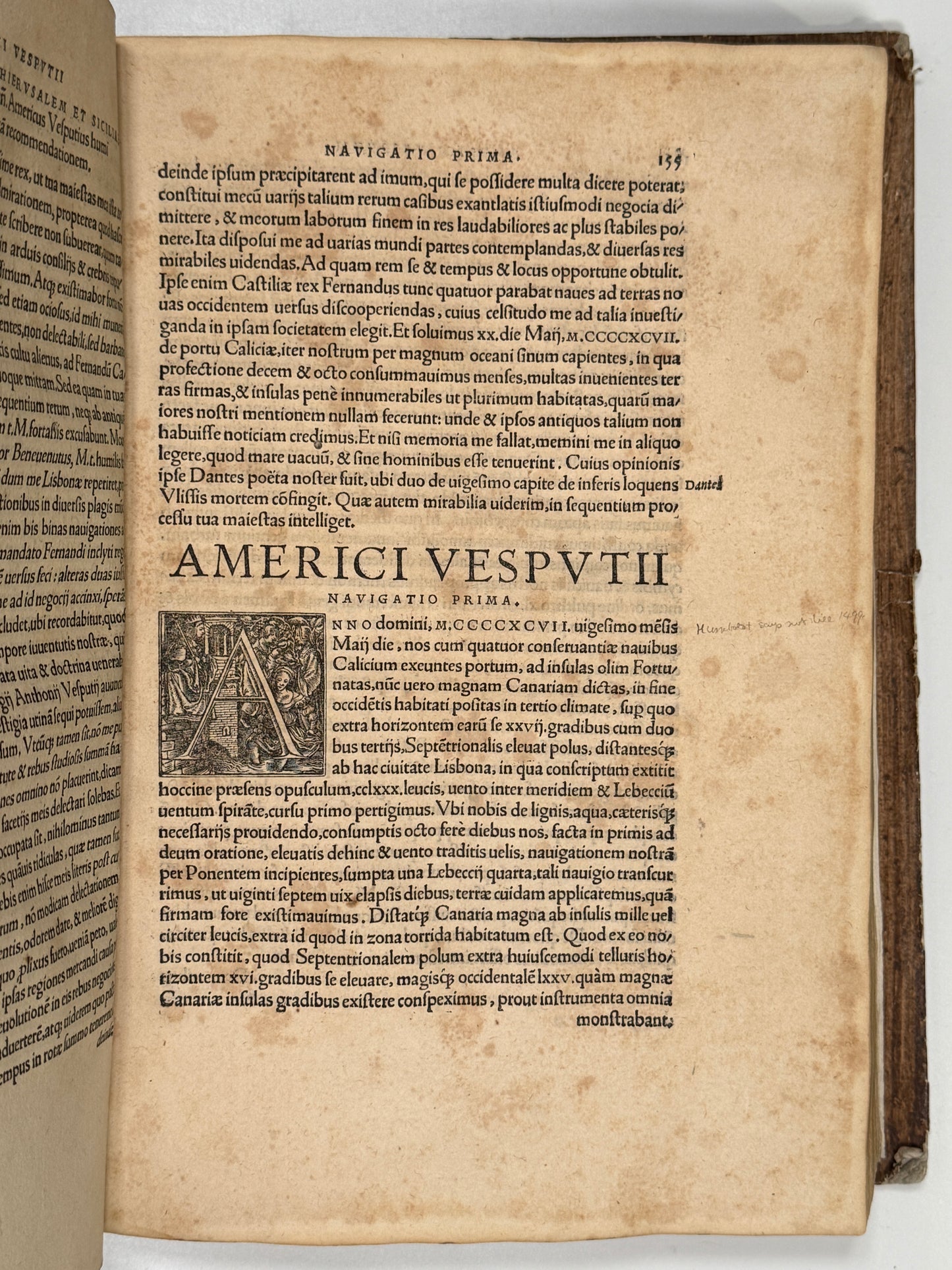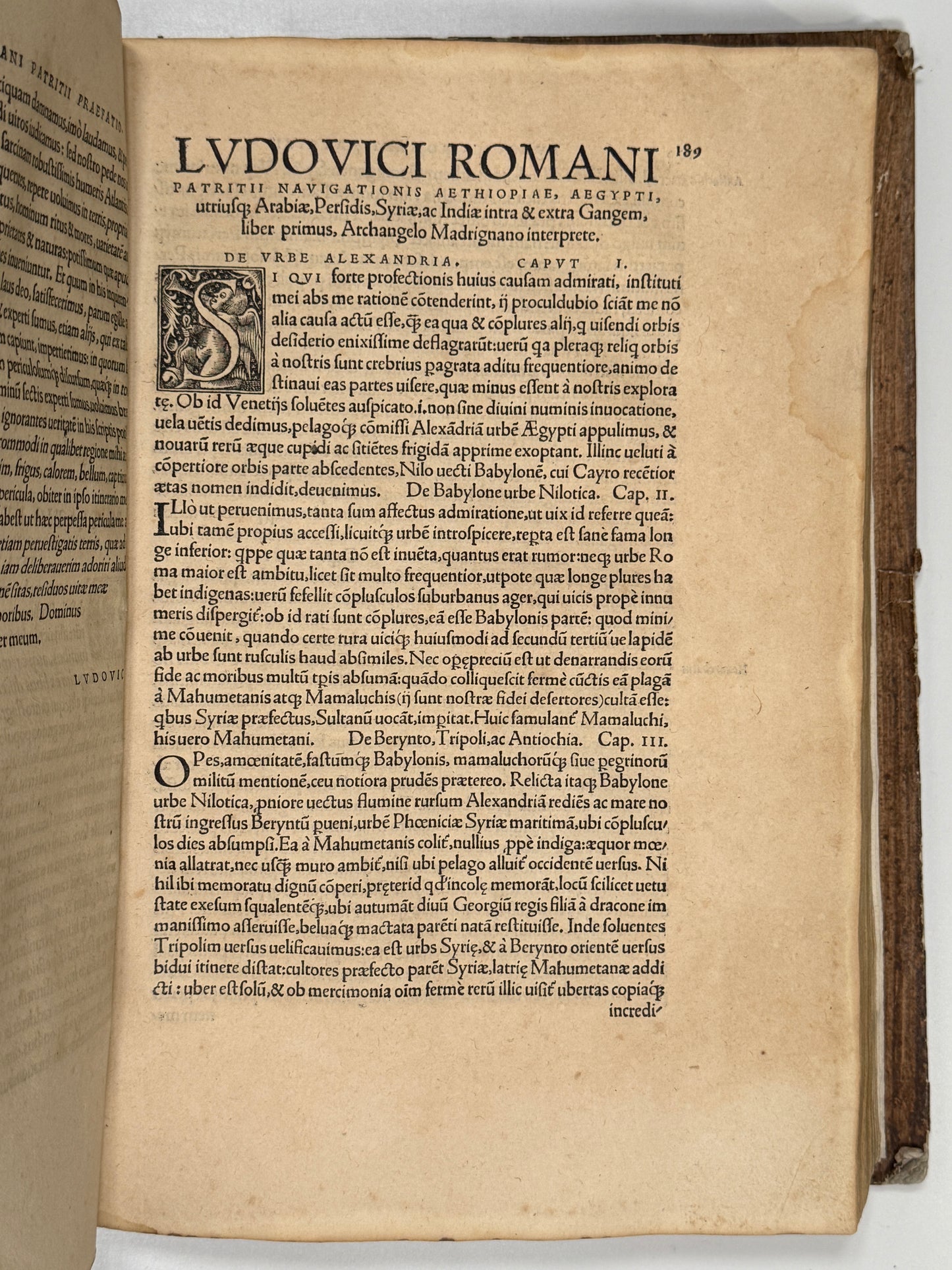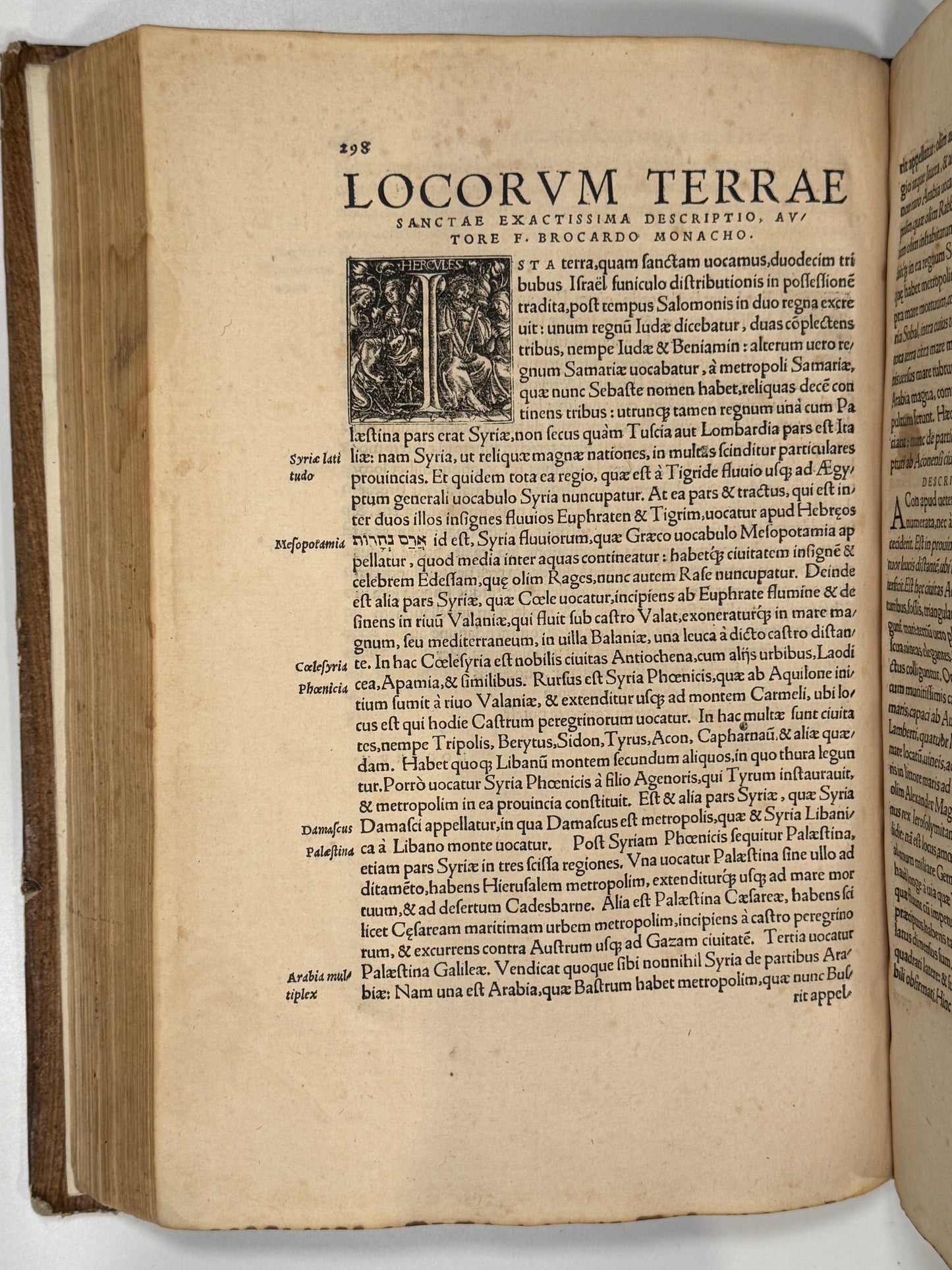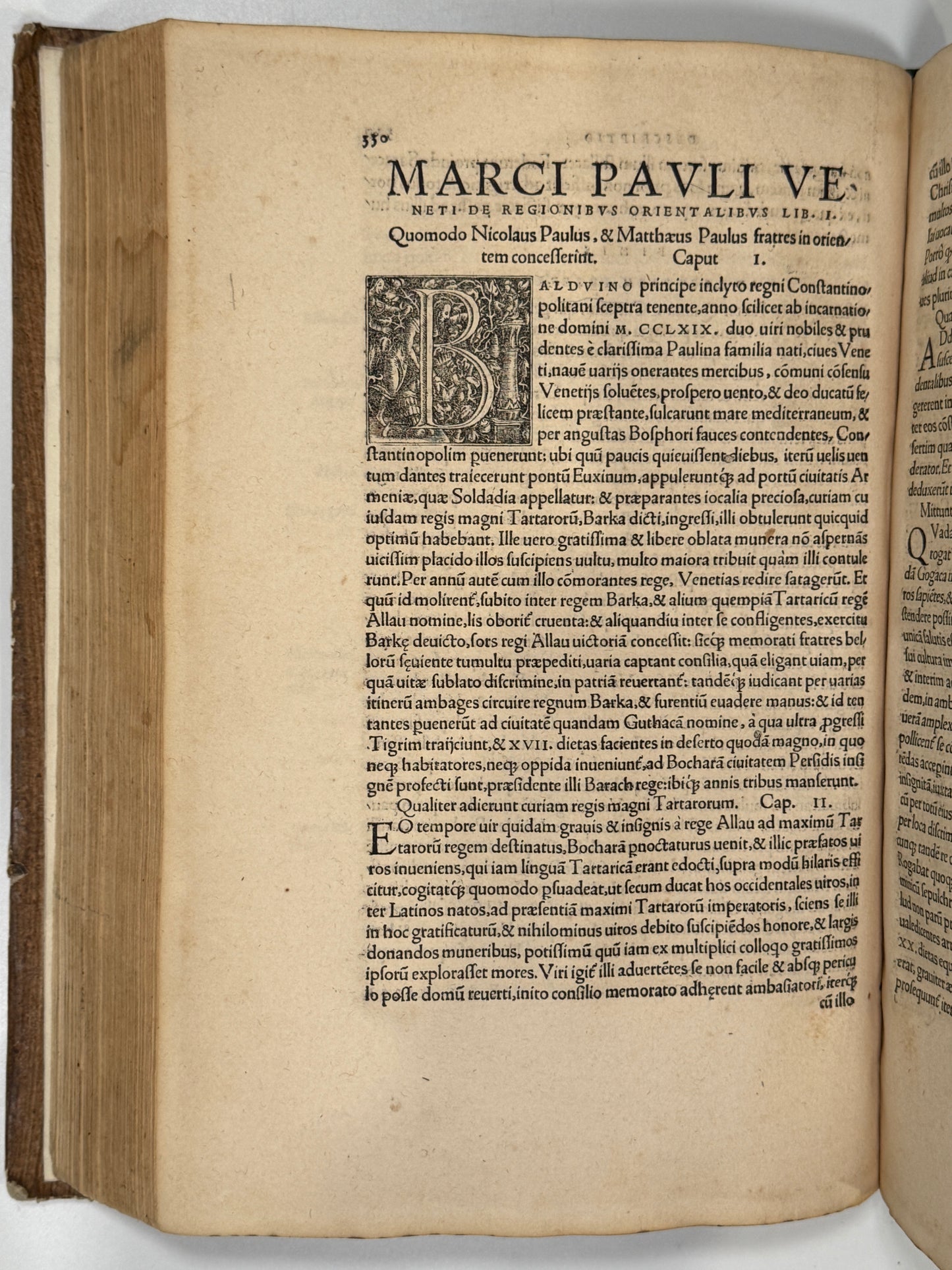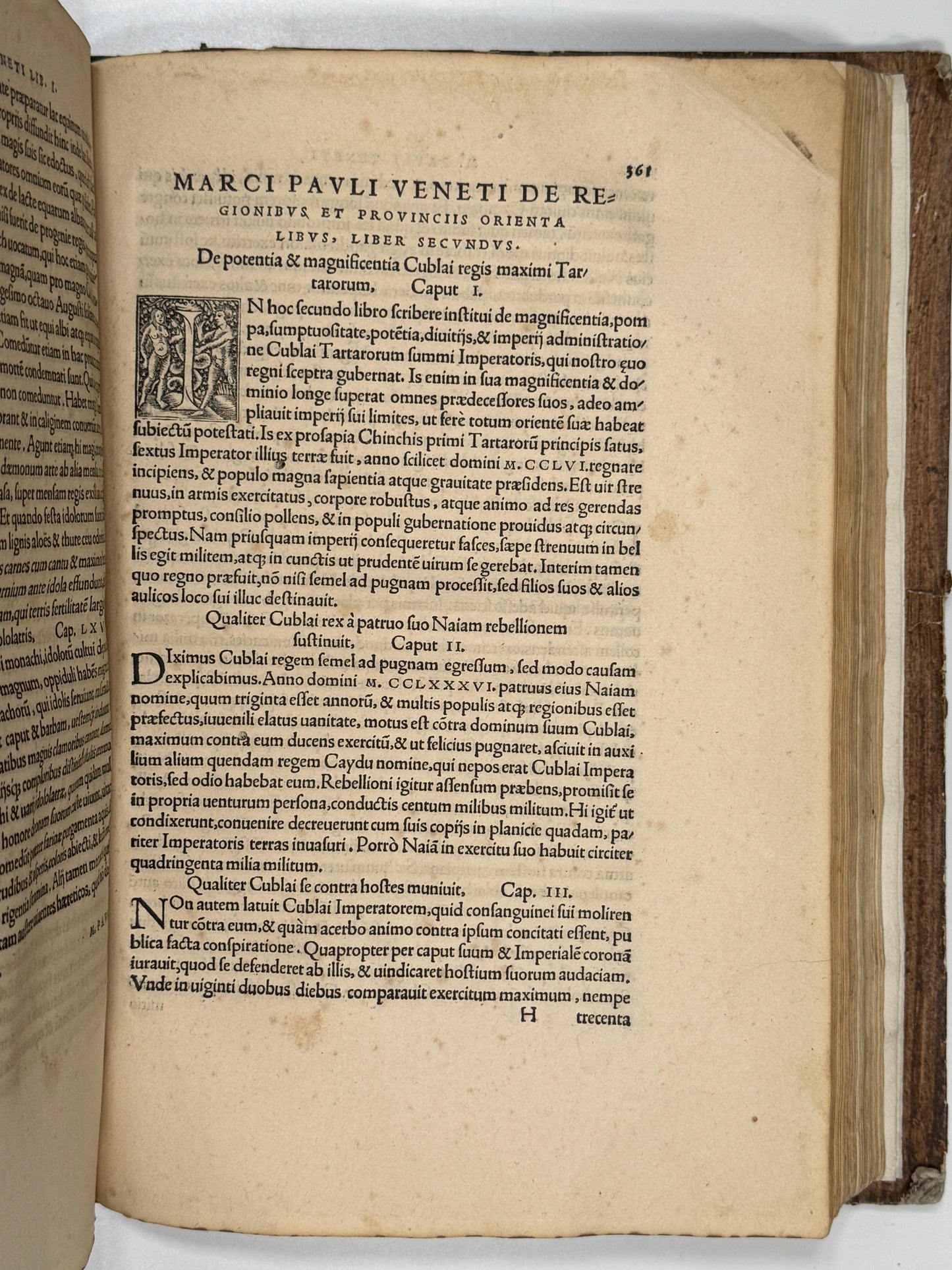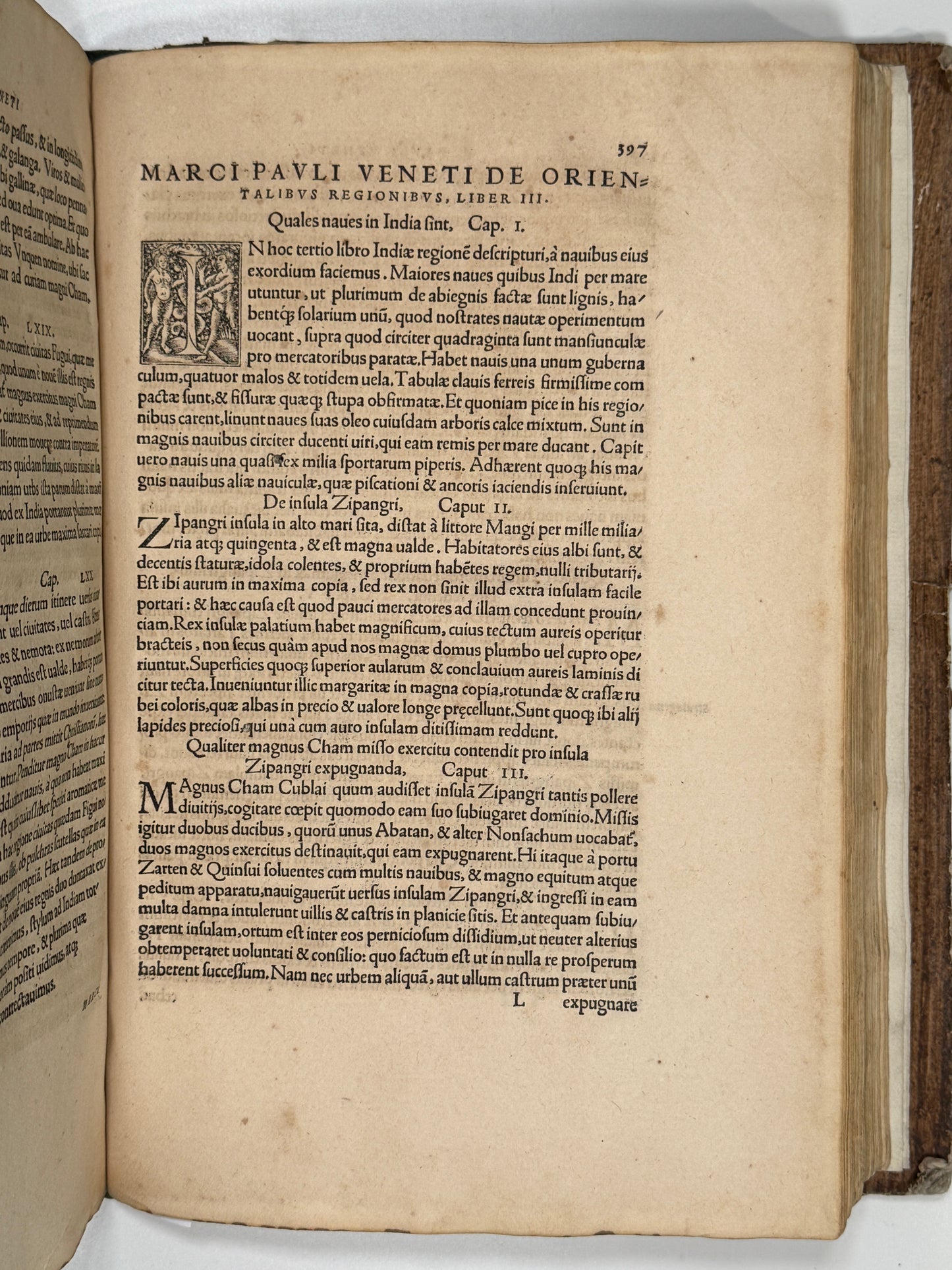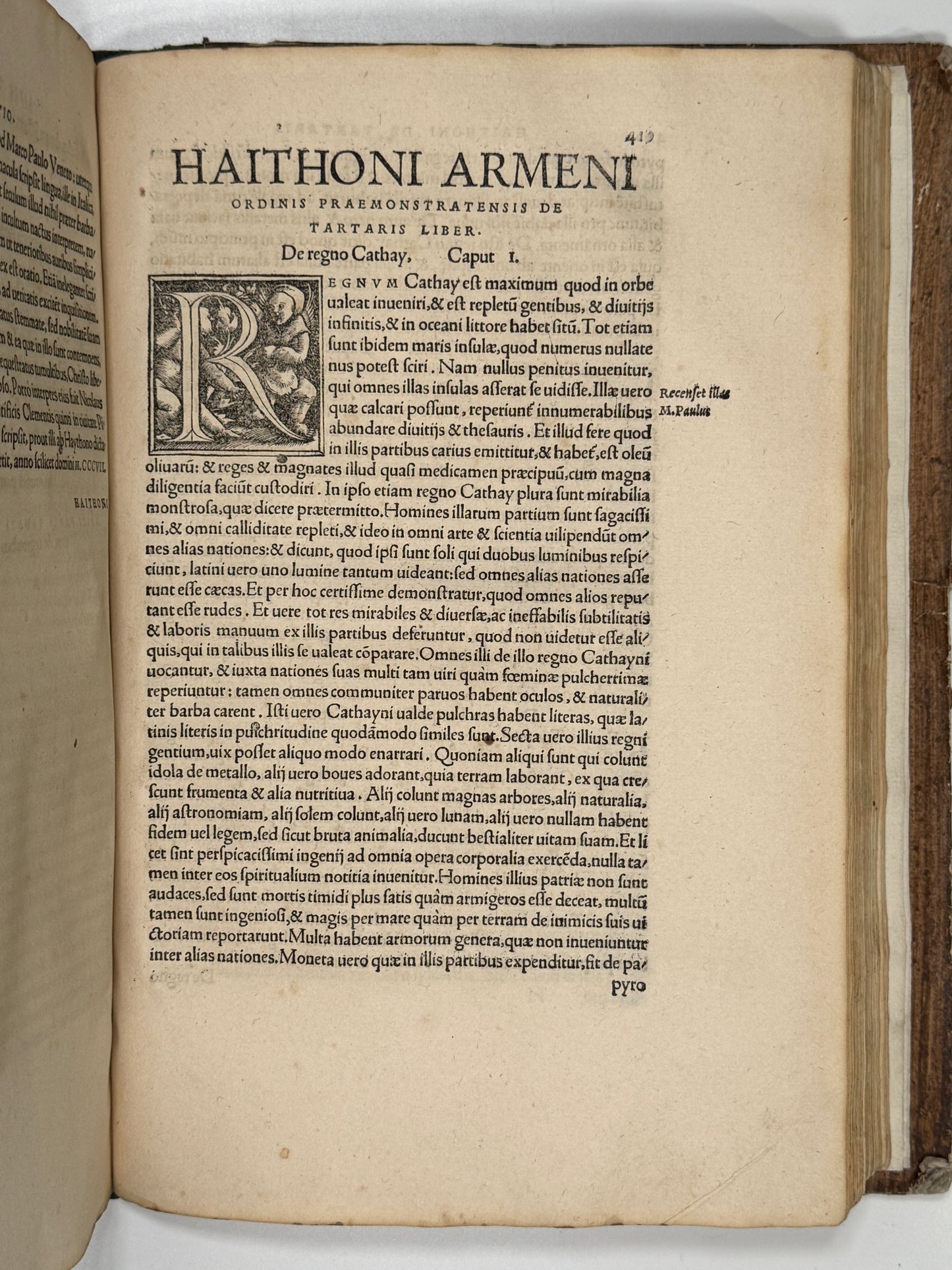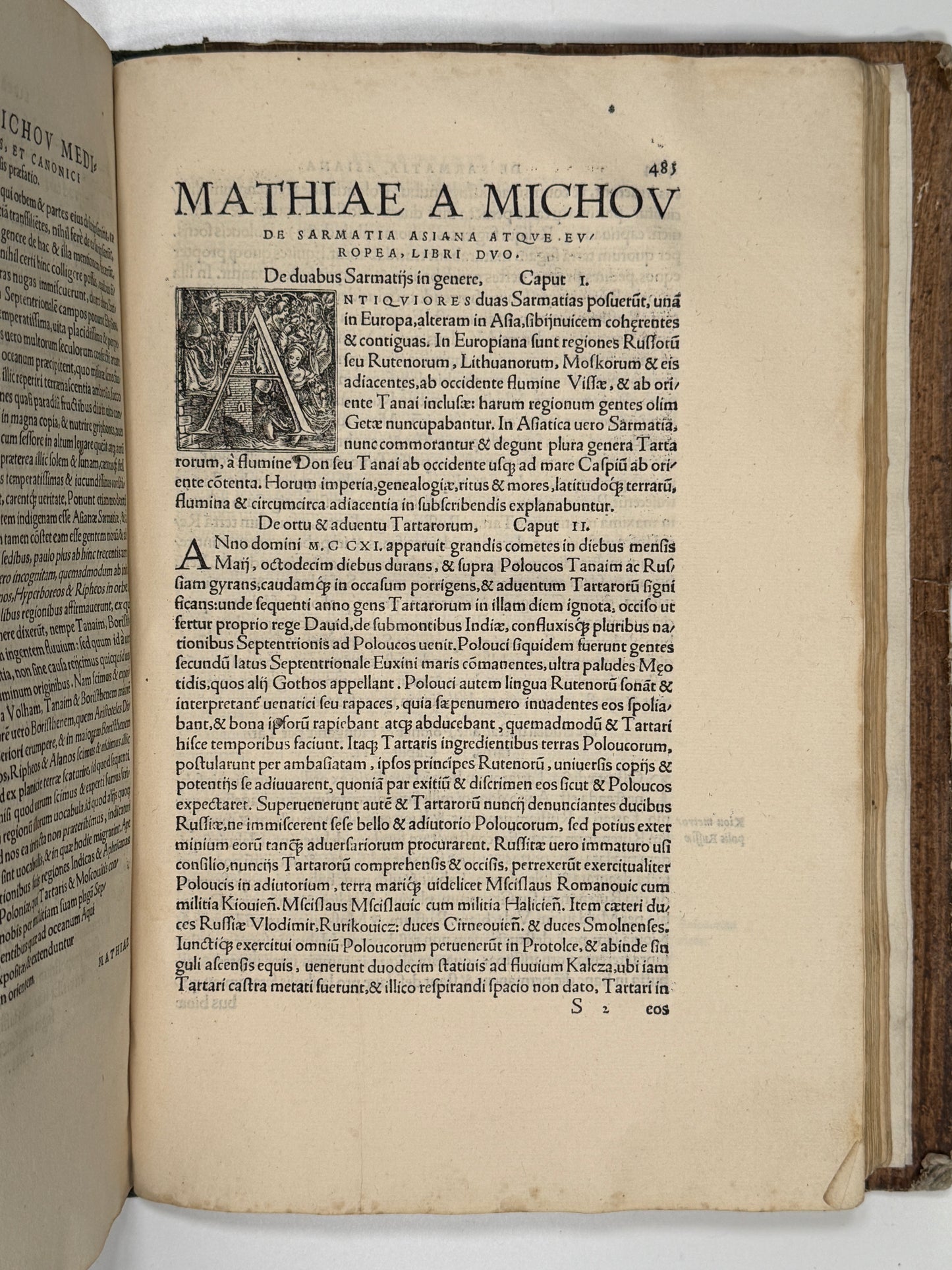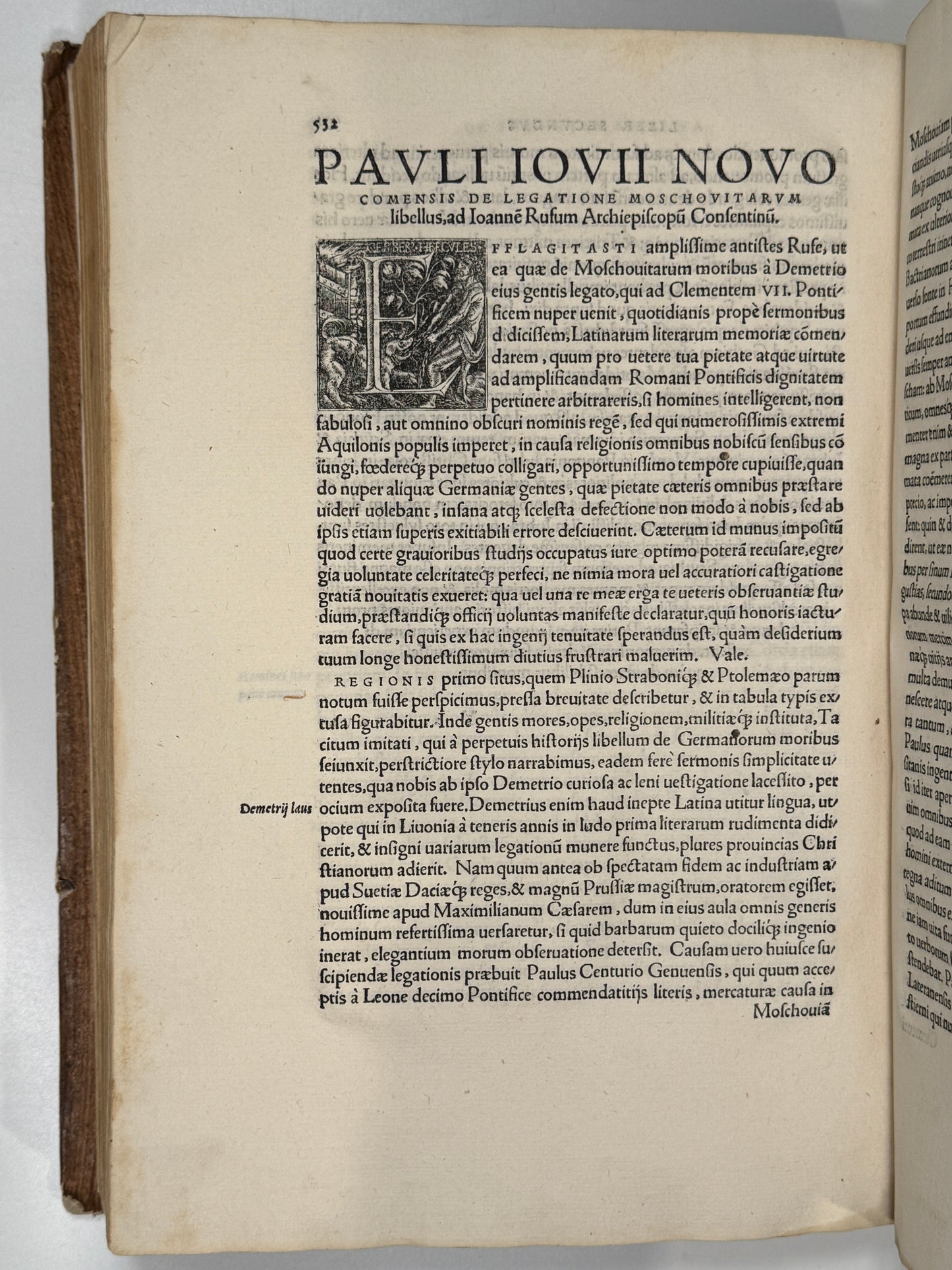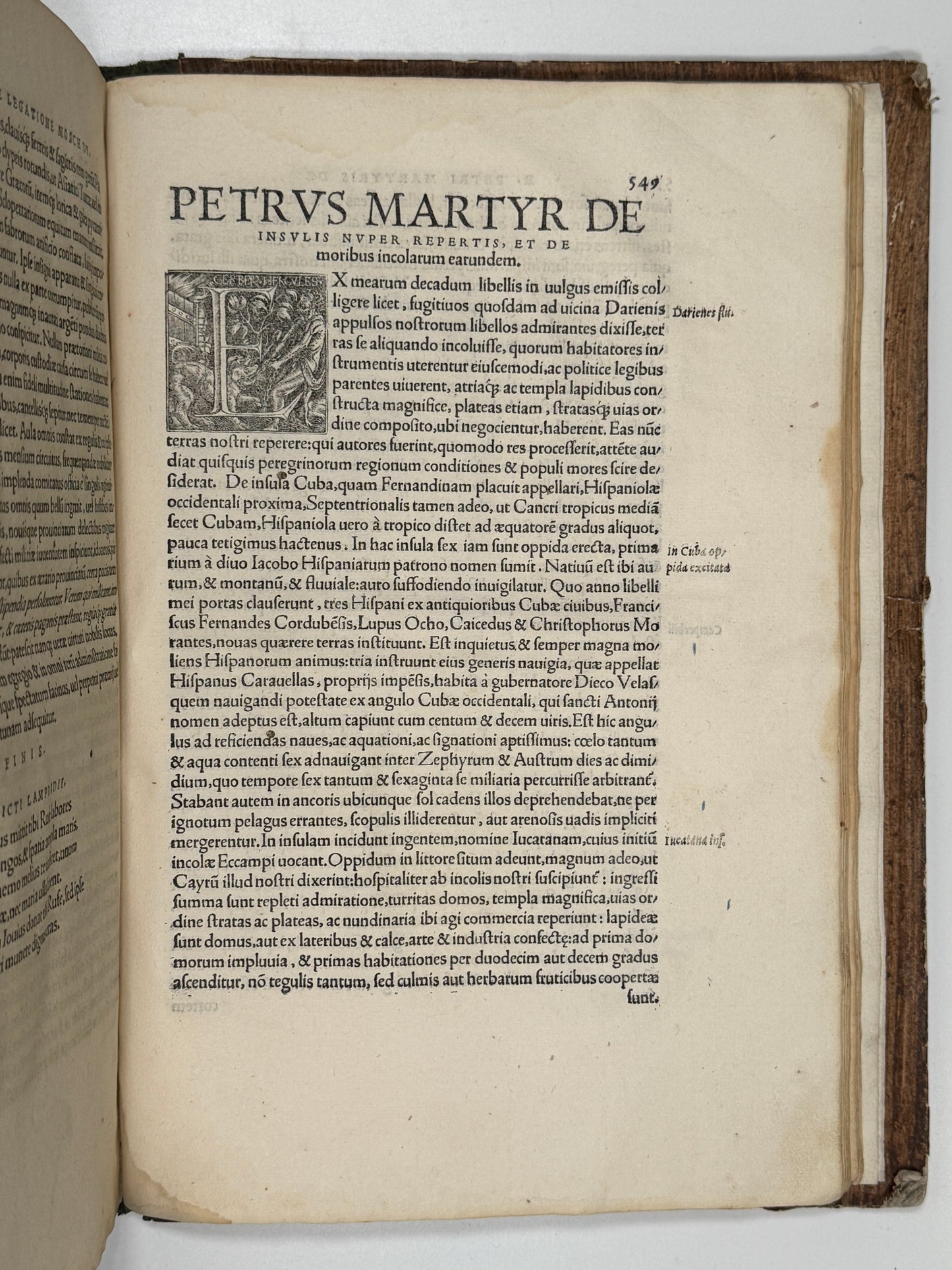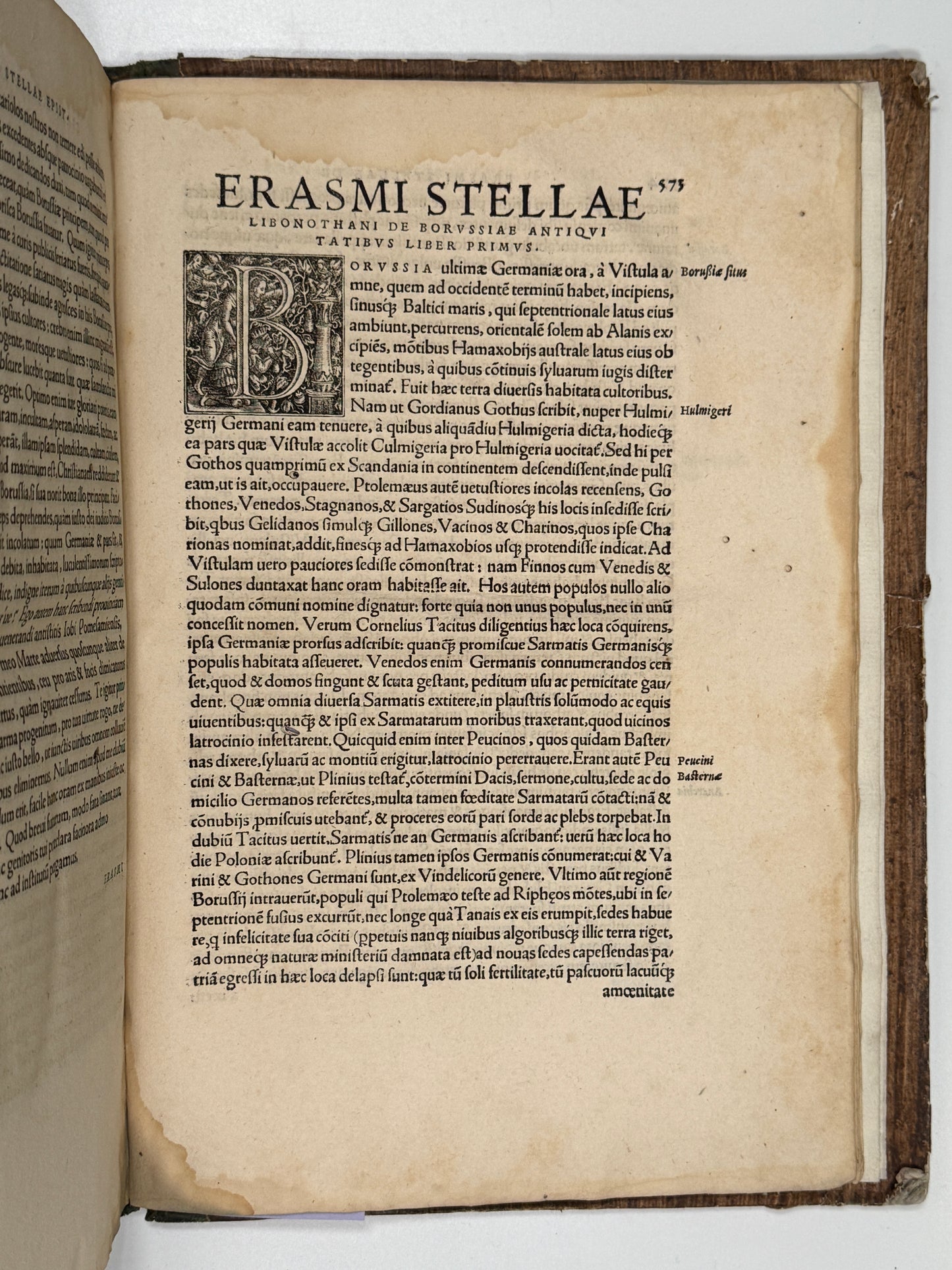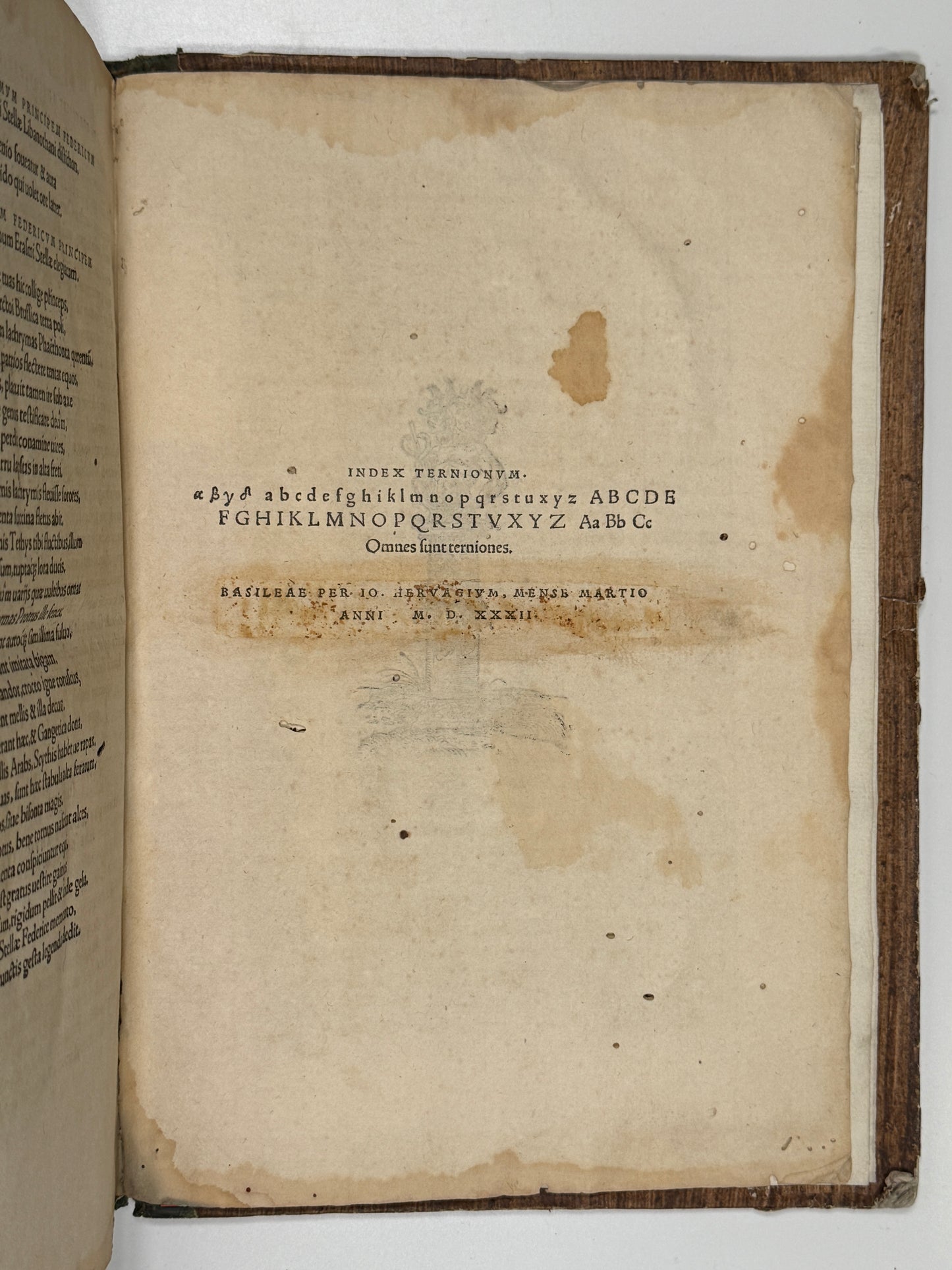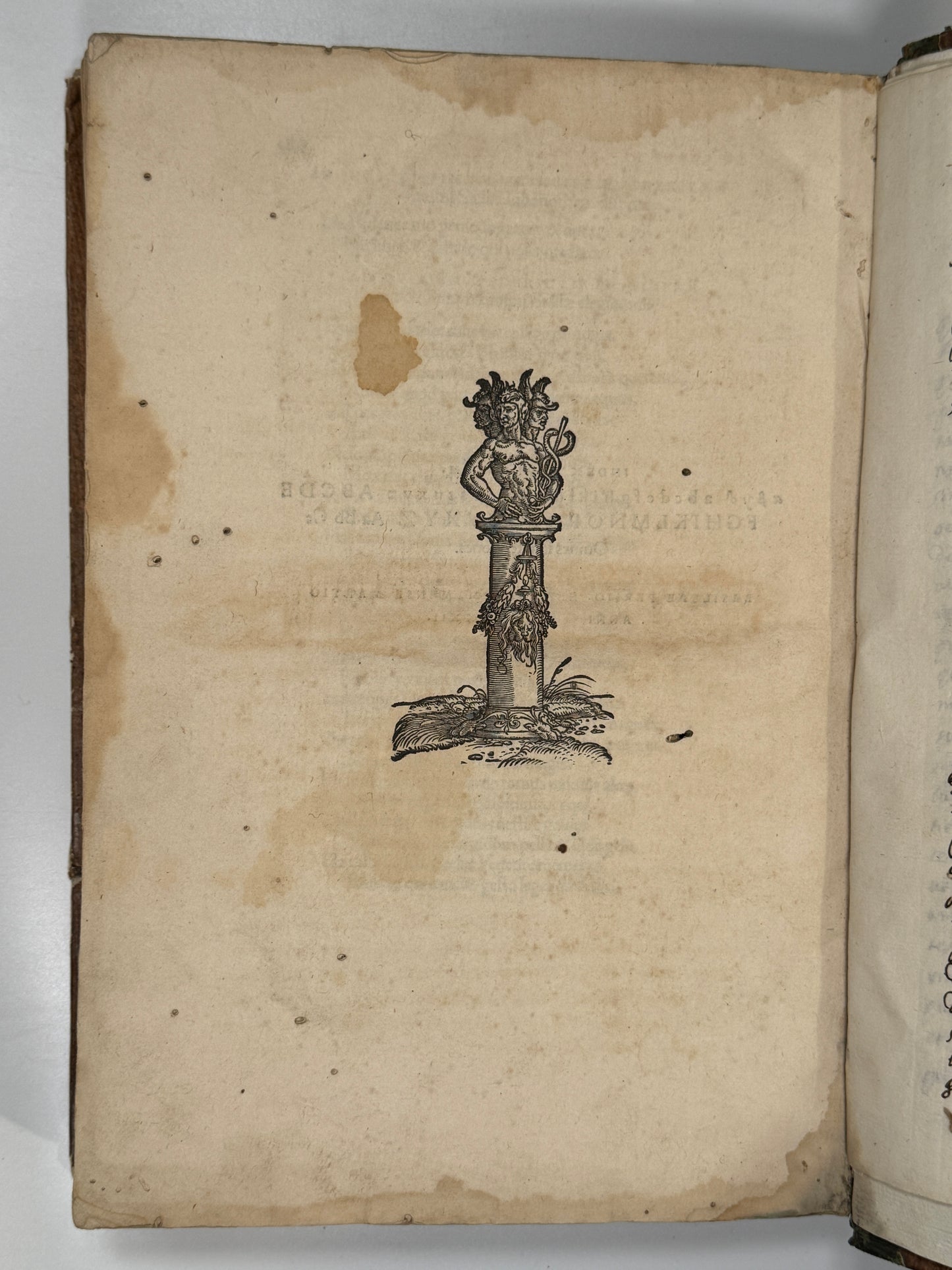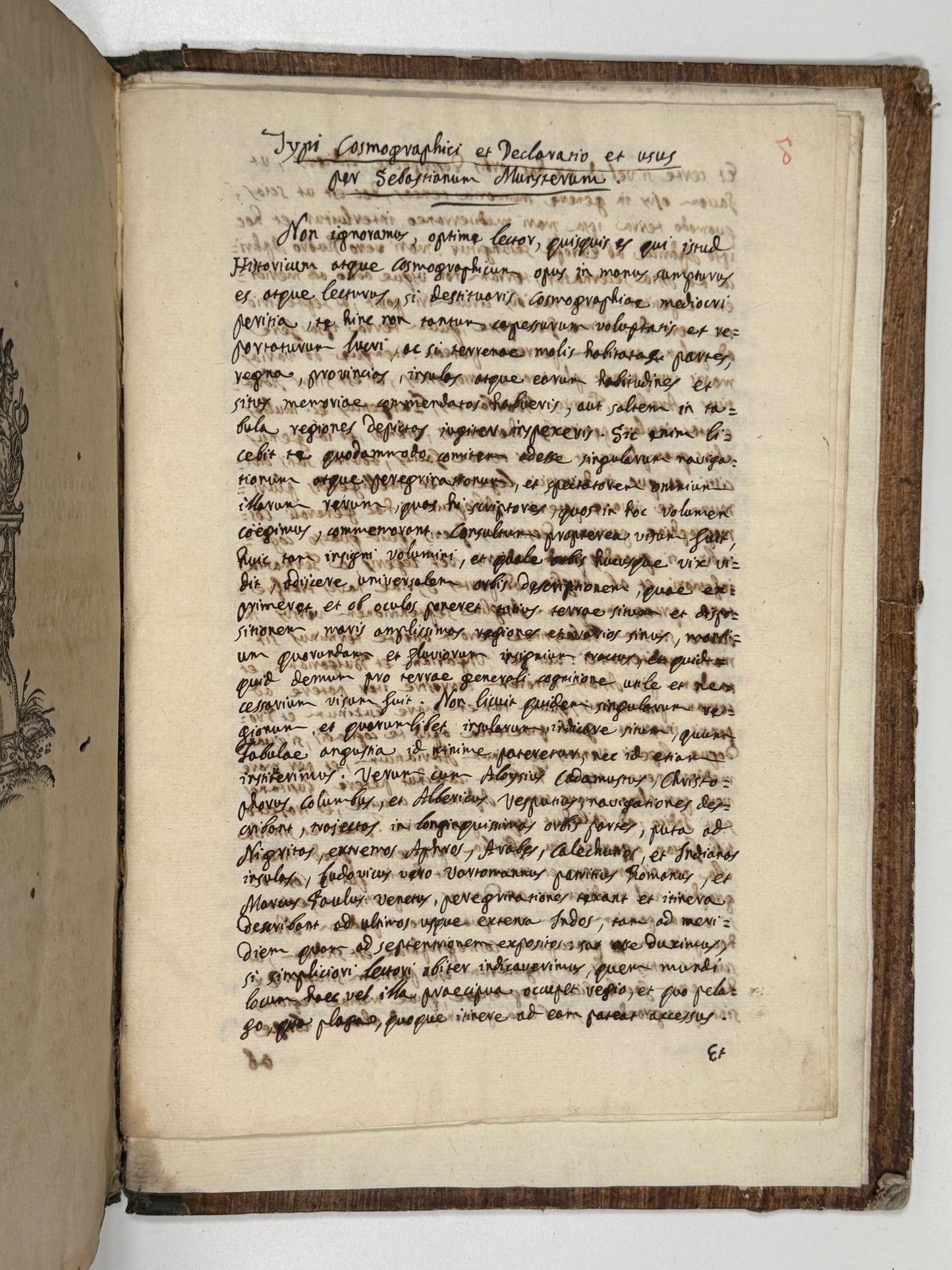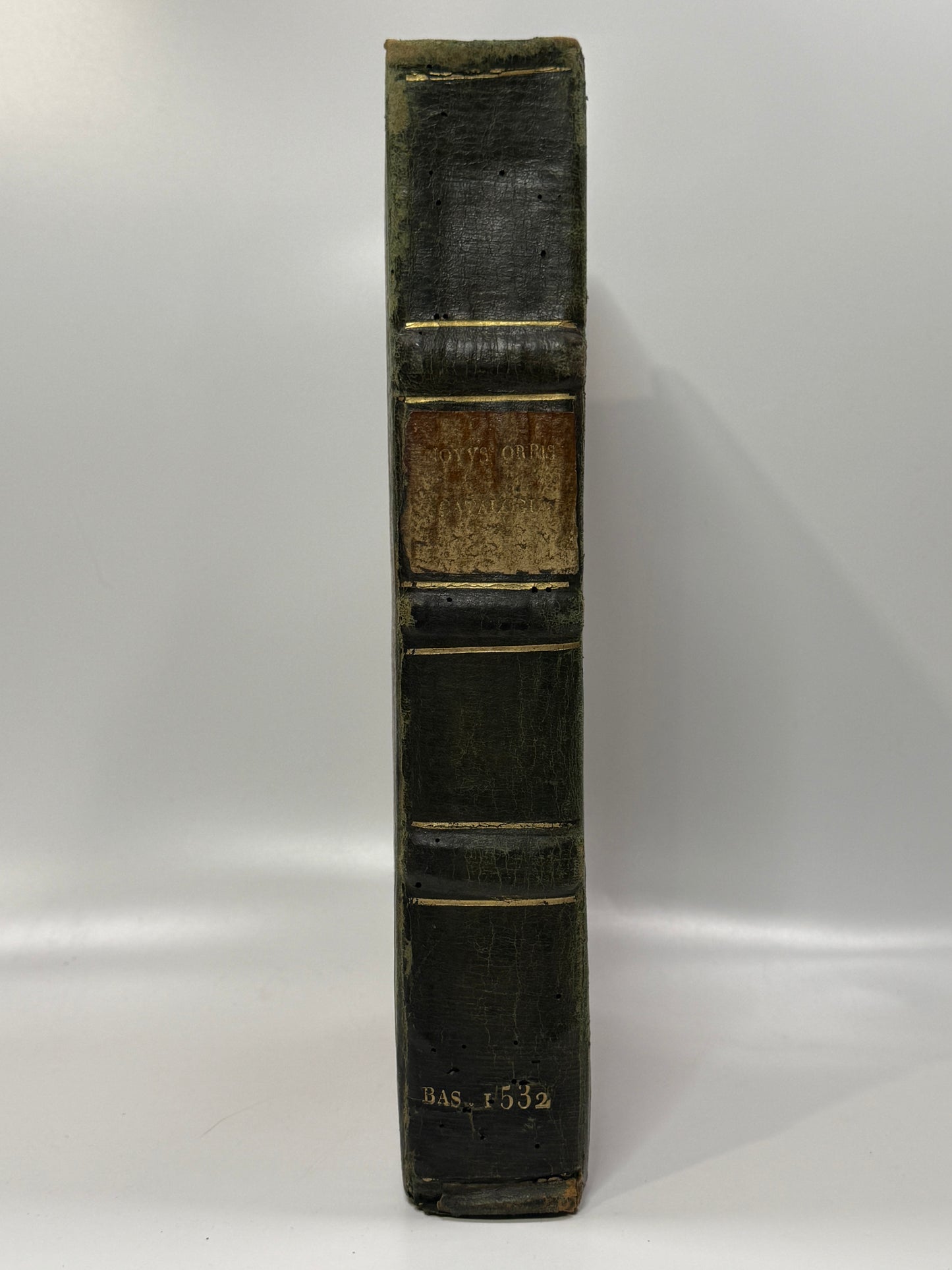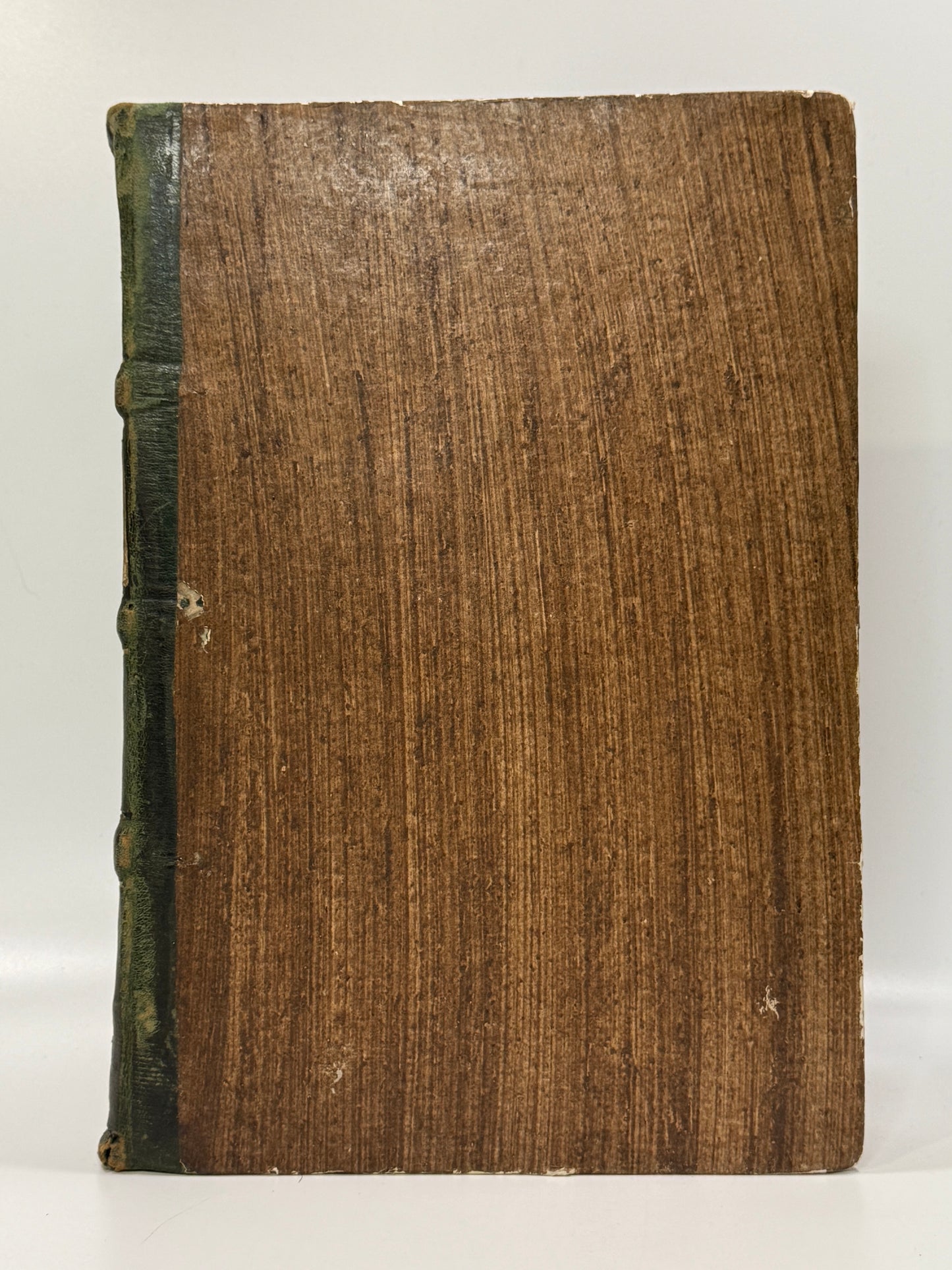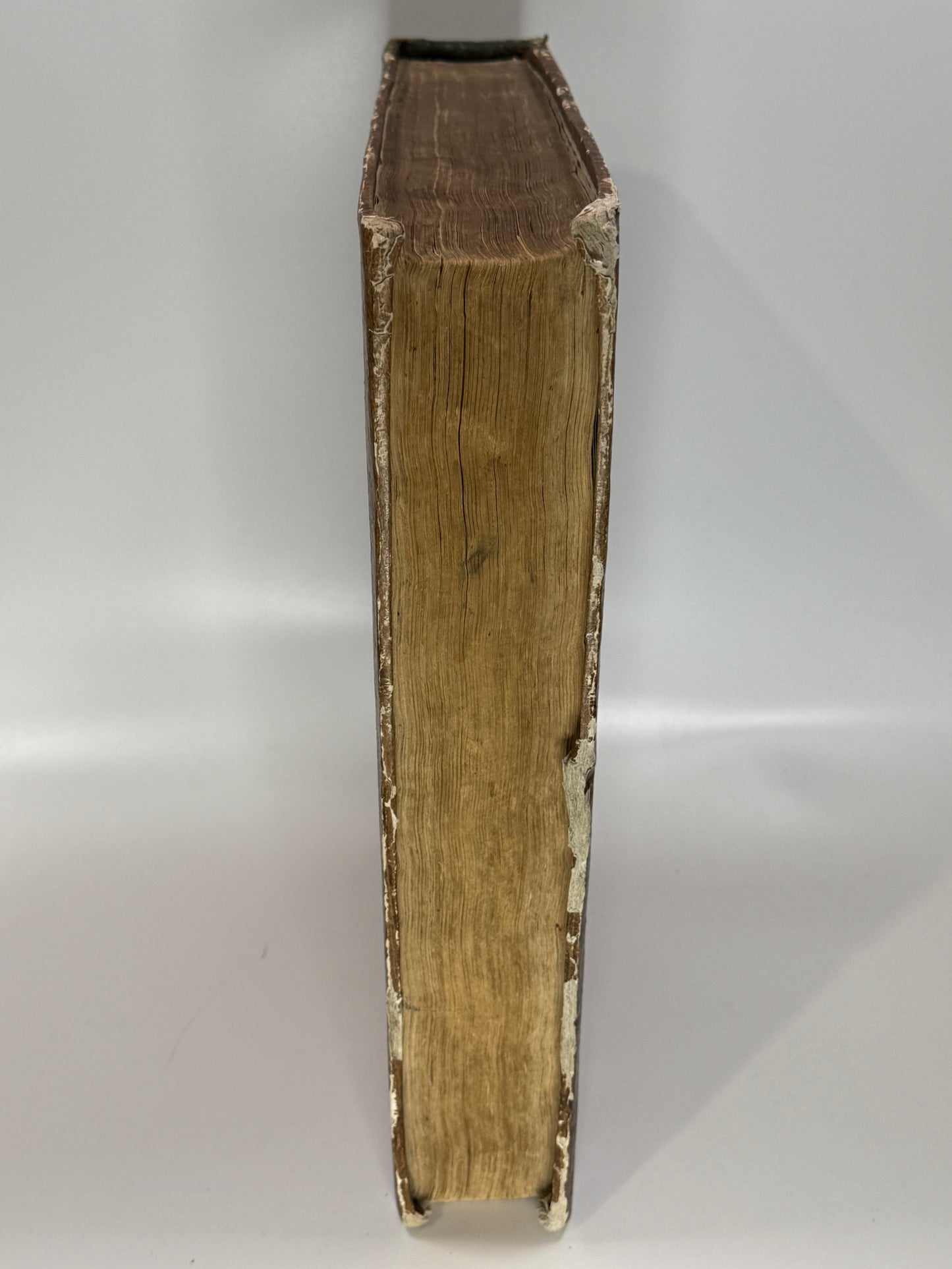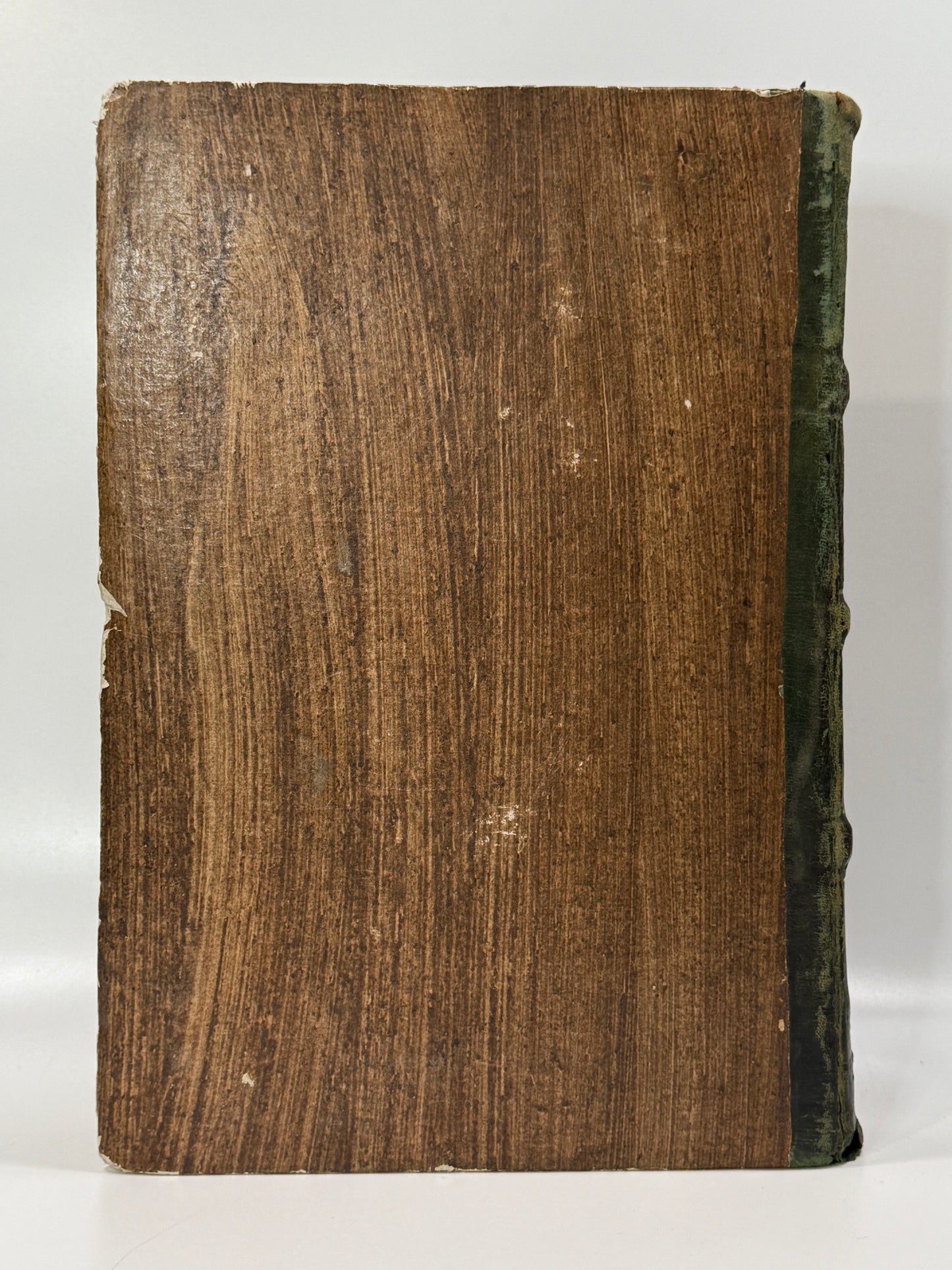Novus Orbis Regionum 1532 First Edition Travel Collection: The Discovery of America
Novus Orbis Regionum 1532 First Edition Travel Collection: The Discovery of America
Couldn't load pickup availability
Novus Orbis Regionum ac Insularum Veteribus Incognitarum, una cum tabula cosmographica, et aliquot alijs consimilis argumenti libellis, quorum omnium catalogus sequenti patebit pagina. His accessit copiosus rerum memorabilium index. By John Huttich and Simon Grynaeus. Basel: Johann Herwage, 1532, folio.
THE IMPORTANT FIRST EDITION OF ONE OF THE EARLIEST COLLECTED ACCOUNTS OF GLOBAL EXPLORATION, INCLUDING COLUMBUS, VESPUCCI, AND MARCO POLO
-------------------
A foundational work of early geographical literature and one of the great collections of early travel and discovery narratives. This first edition brings together a wealth of reports on the newly encountered lands of the Americas, Africa, and Asia, including Latin versions of texts attributed to Christopher Columbus, Amerigo Vespucci, and Marco Polo, among others. Grynaeus and Huttich’s editorial enterprise was among the first to attempt a systematic compilation of accounts from the expanding horizons of the known world. This book is an important work, being the second great collection of voyages after Fracanzio da Montalboddo's Paesi Novamente Retrovati, a Latin translation of which is included in the first part of this book which notably includes Cabral's discovery of South America in 1500 as well as the travels of Vasco da Gama, and Cadamosto and Sintra in Africa and India. Travel accounts regarding Russia, India, Israel, and South America are also included, as well as Columbus' first three voyages which of course includes his so-called "discovery of America."
The sections relating to America include: the first three voyages of Columbus (pp.115-118), Vincent Pinzon's voyage (pp.122-130), Vespucci's third voyage (pp.130-142), the four voyages of Vespucci (pp.184-187), and the extract of the fourth decade of Peter Martyr (pp.570-584).
-------------------
Provenance:
Stamp from the Herculis de Silva collection to title leaf verso, a known 18th century collector of incunabula and other important works. Bertarelli in his Gli ex libris Italiani dates this stamp to c.1785 (no.3).
Ink ownership inscription to ffep recto dated December 11th 1877 (illegible).
Sold by Kirchhoff & Wigand in Leipzig, Germany circa 1880 with a cutting from their catalogue entry for this book to the upper front pastedown where they suggest that the map is missing from this copy "as a result of an expurgation by ecclesiastical censors" (translated).
From the collection of Jurgen Engel (1993-2023), where sold by Antiquariat Tautenhahn in Lubeck, Germany c.2023.
-------------------
Size: 221 x 320 mm (approx.)
Condition:
[(1), α¹˒³–⁶, β⁶, γ⁶, a–z⁶, A–Z⁶, Aa–Cc⁶, (1)]
Quarter green calf over wooden boards, circa 19th century, an earlier tooled morocco label laid down to the spine (rubbed & discoloured with some loss), compartments lined in gilt between raised bands, date tooled in gilt to the foot of spine. Title written in an elaborate contemporary hand to the bottom edge of the page block. Both boards are securely attached, the binding is secure, and stands without shelf lean. Remnants of a removed bookplate to front pastedown alongside two small labels as described under provenance. Some pencil writing to front pastedown and ffep recto from a previous bookseller, with an ownership inscription dated 1877 to ffep recto. Some ink inscriptions in the outer margin of the Index providing the date for some of the expeditions, with a c.1785 stamp to the foot of this same page. Minor worming to the first few leaves not affecting legibility of text. Lacks α2 (first leaf of Simon Grynaeus' introduction) and one preliminary gathering of six leaves which describes the map (δ1-6), also lacks the map, as often. The δ gathering is provided in circa 18th century manuscript facsimile tipped in at the rear. There are two small woodcuts in the text (c3v and l5r) as called for. Generally bright and clean throughout, some mild toning and very sporadic spotting, but overall internally an excellent example.
[Adams G1334; Sabin 34100; VD16 G3827; USTC 678746].
